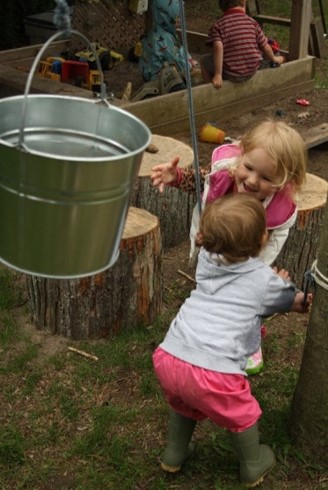What is the shoulder girdle?
The shoulder girdle is also known as the pectoral girdle. It is a ring of bones formed by two sets of bones: the scapulae (shoulder blades) and the clavicles (collar bones) which , along with the muscles and ligaments connected to them, form a circle around the top of the rib cage. The shoulder girdle forms a stable base from which the shoulder joint moves. It supports arm movements from the shoulder joint. Shoulder girdle stability happens when the large muscles of the shoulder girdle contract together effectively to stabilise the shoulder blade and the shoulder joint.

Why is it important ?
Children’s upper body strength, including shoulder girdle development is important because it develops the muscle tone which is required to support children with object manipulation, grasping, and eventually to develop the necessary control and stamina for writing. Good upper body and shoulder girdle stability enables the smaller muscles in the arms and hands to work more efficiently because they have been given a stable base of support. Without this stability children can get into poor postural habits and may struggle to build stamina for writing, as their muscles and joints become unnecessarily fatigued. Poor upper body strength and shoulder stability can affect handwriting and other fine motor tasks. Over time, poor upper body strength can lead to an over reliance on the arms and this can be detrimental to good physical development.
The development of good shoulder girdle strength enables children to develop something called proximal stabilty. This means that the child is able to control the joints closest to the body effectively, which in turn leads to better distal stability, quite simply better control of the joints which are further away from the body. In this case the elbows, wrists and fingers. It is a necessary building block for good handwriting and fine motor control.
Some signs to look out for:
Children who have not yet developed good upper body strength often work at arms length. When they write they often have the paper far away from their body. Take time to look at how a child positions their arms. A child who has developed good upper body strength looks at ease when writing, cutting and manipulating. Children who have not yet developed this area can look uncomfortable. Limbs may seem “spiky” with children working at odd and awkward angles. They will tire easily and not want to work on fine motor activities such as writing or cutting for any length of time.
How can you support it?
Upper body strength should develop through exposure to a large range of gross motor opportunities.
For small children, lying on the tummy and pushing up on the arms, as well as crawling will help the muscles of the shoulder girdle to develop. Tummy time at story time, with children lying on their stomachs, instead of sitting up can develop upper body strength. Many schools I work with have adopted this approach to story time and have seen increased concentration as children do not have to focus on proprioceptor control (see previous blog).
Children should be encouraged to take part in activities that involve climbing, pushing, pulling, throwing and weight-bearing through their arms, for example wheelbarrow walking, in order to strengthen all the muscles around the shoulder joint and the scapula. Crawling through tunnels encourages children to bear weight through their arms.
Running, jumping, climbing, swinging, and skipping etc. all allow a child to exercise their large muscle groups, and often support many areas of physical development simultaneously. Monkey bars are great options for increasing a child’s upper body strength and dexterity. Trapeze bars which are also a great way of increasing upper body strength as the child pulls themselves up, or swings on the bar.
Large whiteboards, chalkboards, and pieces of paper hung on fences or walls for children to decorate with large arm movements can develop shoulder girdle strength. A large whiteboard or roll of paper on the floor can also support the child to develop their core and upper body strength.
Loose parts and transportation play
One of the most simple and cheap ways to develop upper body and shoulder strength is to invest in items which are heavy for children and which they would naturally want to transport. Large building blocks, tyres, wheelbarrows full of pebbles or sand, pulleys, crates, heavy buckets full of water all provide meaningful opportunities for children to develop their strength alongside a range of other skills such as co- operation, PSED, and the characteristics of effective learning. Sand pits, gravel pits and real bricks in the construction area can all provide rich and meaningful opportunities to transport objects. These require children to take risks, and adults have to teach children how to use these materials safely and considerately.
What do you need?
Heavy objects to lift and move, climbing opportunities, brushes, spades and digging equipment, pulleys, tunnels, ropes to climb, wheelie boards.
Tyres, blocks, wheelbarrows, trundle trucks, buckets, water, sand, pebbles, crates, bricks.
Large whiteboards, chalkboards, pieces of paper on walls or floors, mark making equipment, paint brushes, large floor chalks, stiff sweeping brushes.
Time and space to explore.
Further reading: Carol Brown (2010) Improving fine motor skills in young children: an intervention study.

Leave a Reply